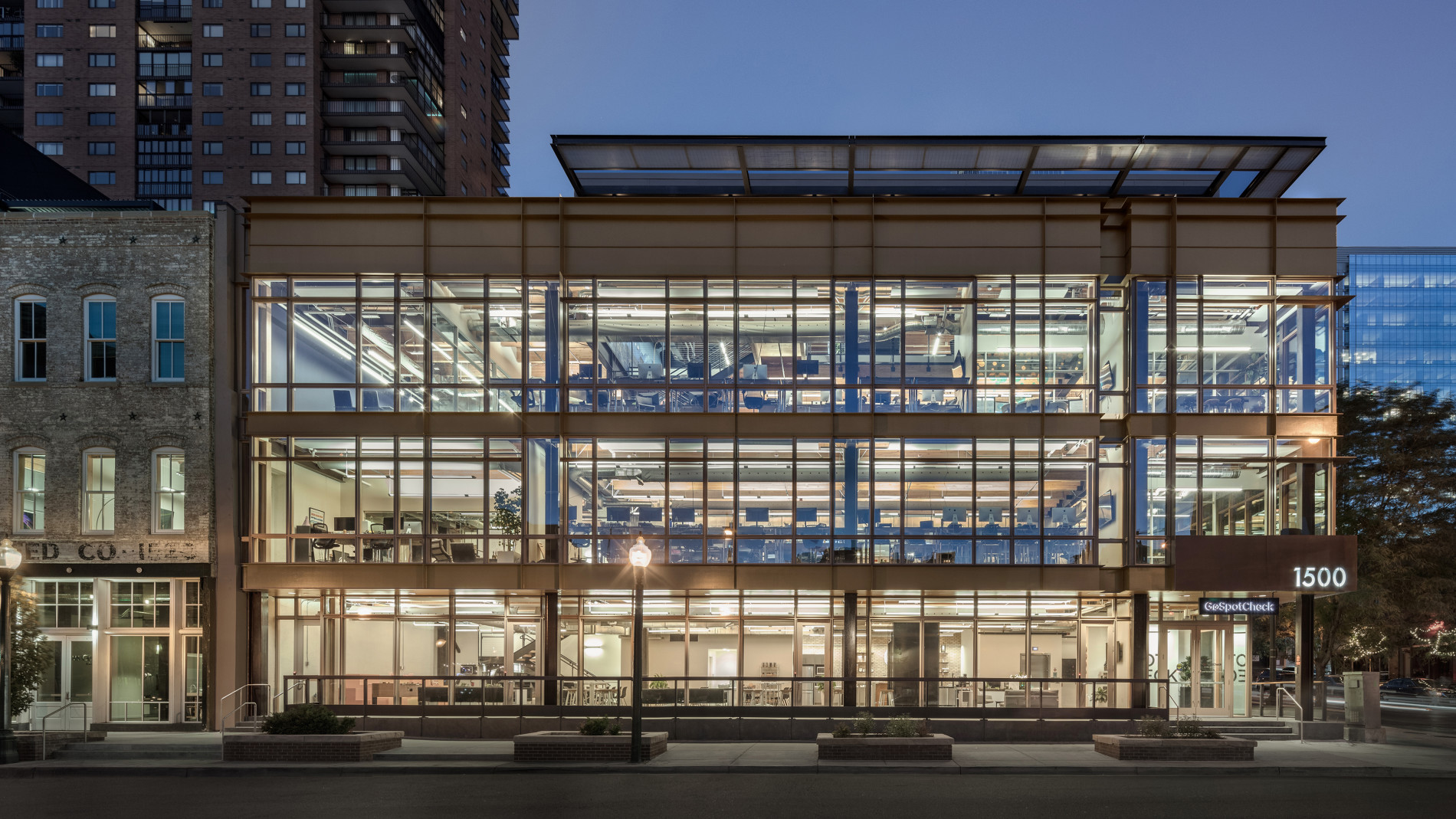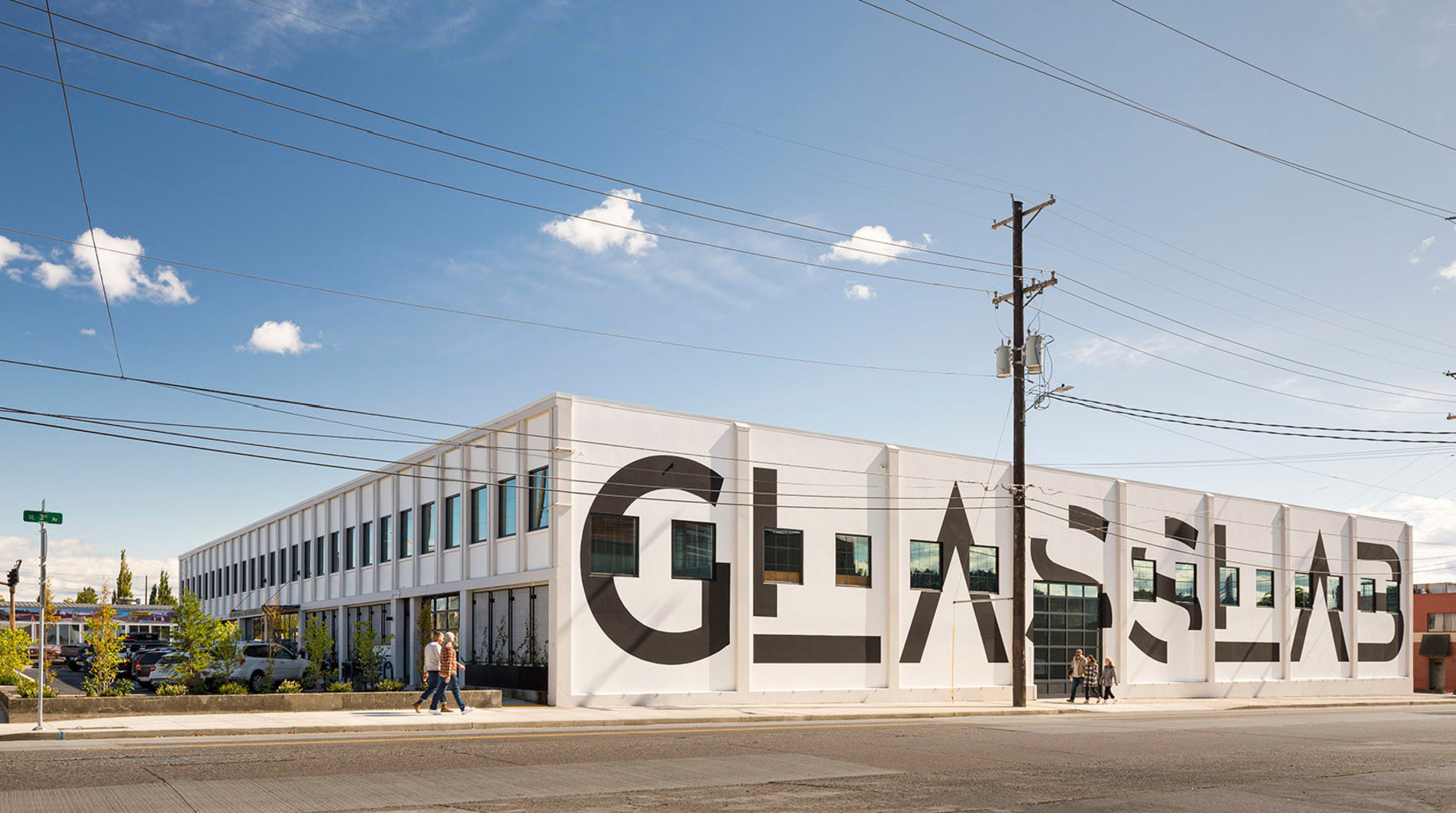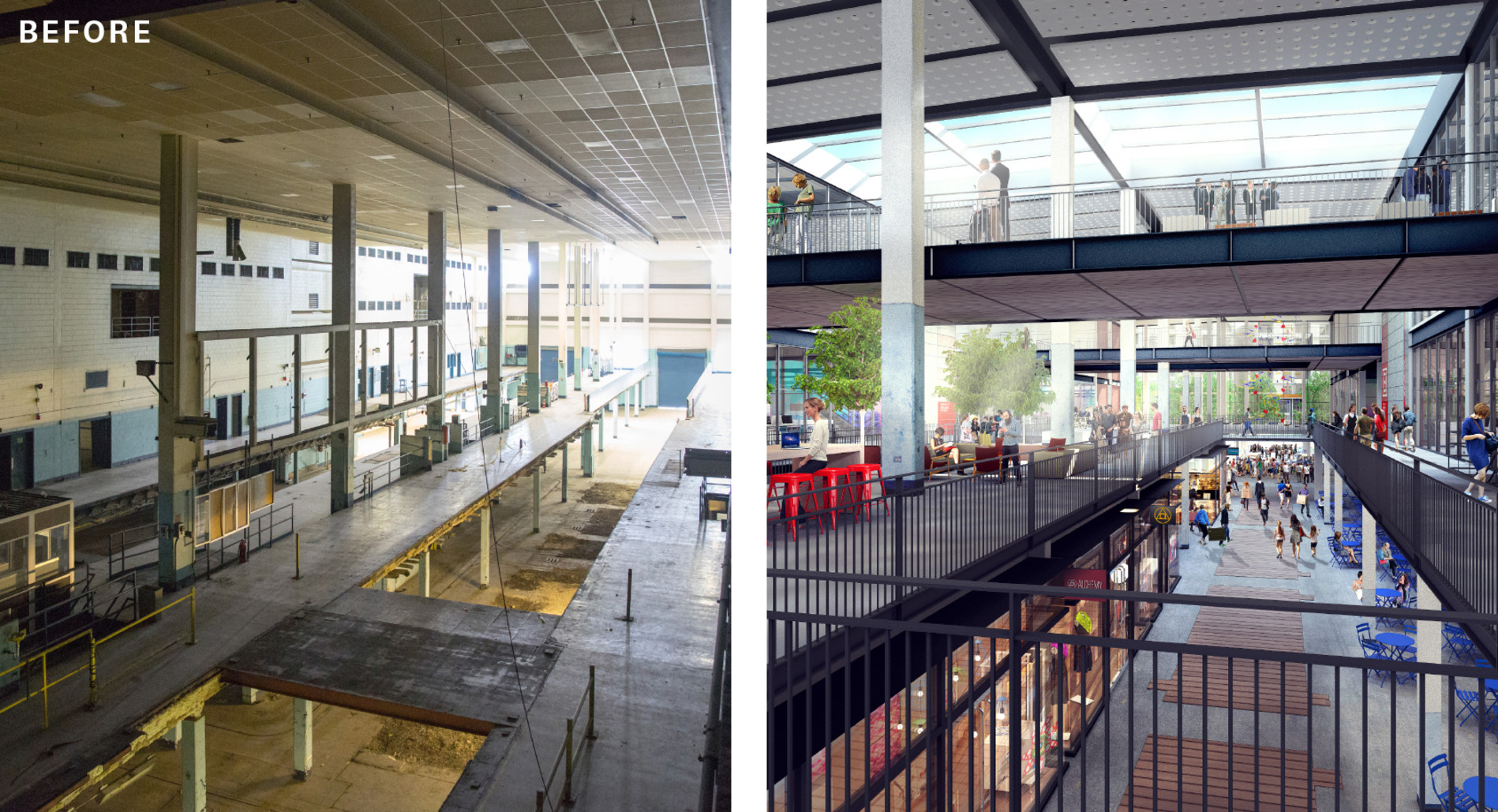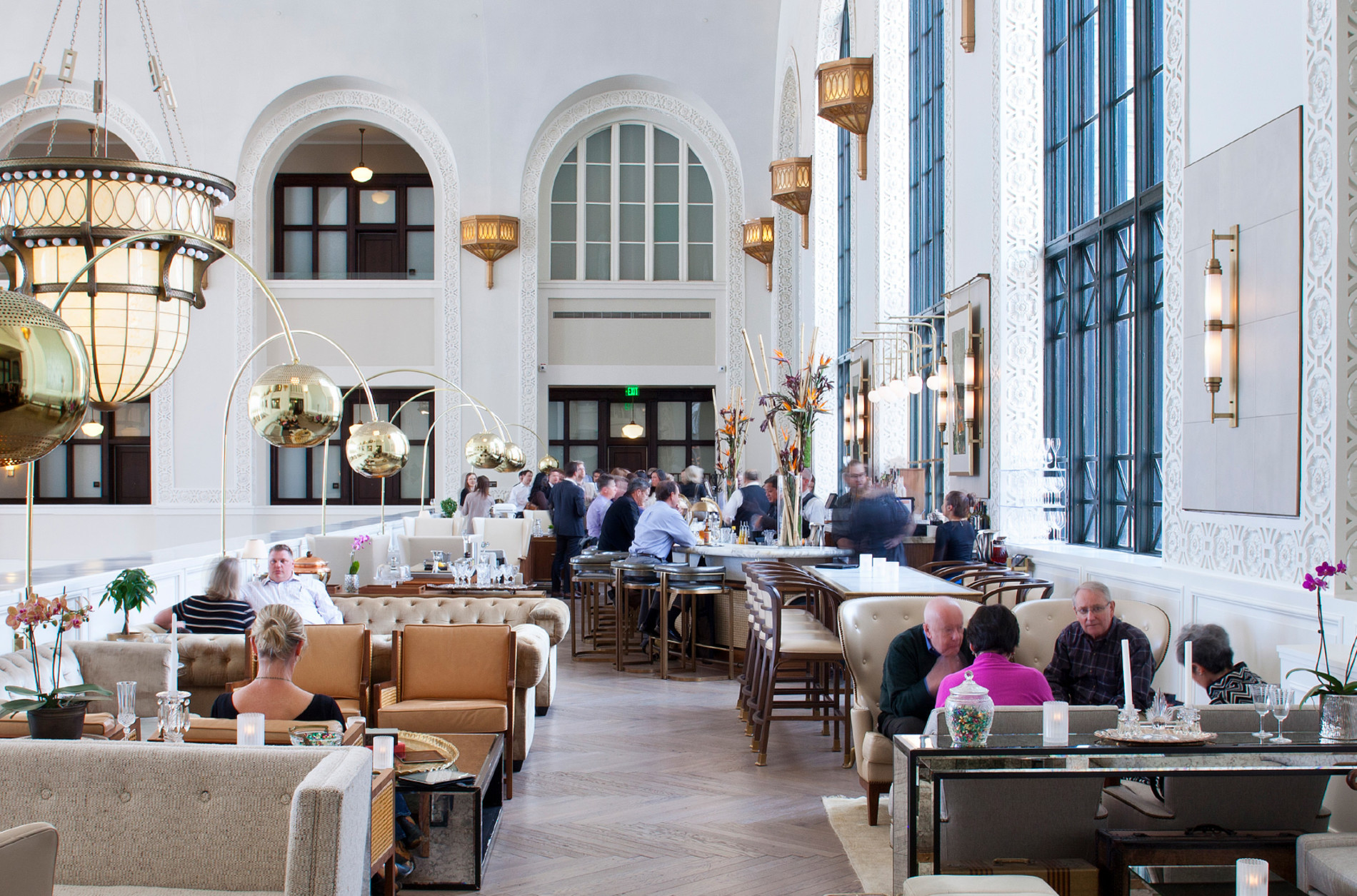
New construction is a strong sign of economic growth, a vital pathway to the density necessary to house our increasingly urbanized population and an opportunity to explore more artful, innovative and sustainable building technologies. As new construction rapidly reshapes our cities it is critical to strengthen the relationship between new development and the existing context and to re-examine the condition of existing buildings to ensure their relevance for the future. Successful urbanism must recognize the inherent social, economic and environmental benefits of preservation, adaptive reuse and repositioning in activating our urban fabric, connecting us deeply to place and providing continuity between the past, present and future.
Our practice has deep roots in the complex work of historic preservation and adaptive reuse. For over 30 years we have focused on the stewardship of our city’s historic fabric and on the thoughtful and innovative integration of new buildings and uses into historic contexts. This work balances continuity with change—recognizing the existing context should be understood, respected, emphasized and enhanced while acknowledging the role of contrast and differentiation in bringing new vitality to projects that must respond with clarity to the needs of the future. Our interdisciplinary design process is informed directly by our experience with historic buildings, and we have a deep belief that the methodology and value proposition of preservation applies directly to the creation of new urban architecture.

Modernist architecture and planning emerged in direct reaction to the historicist approaches of previous generations, through a desire to solve the social and health issues resulting from the radical acceleration of urbanization and industry through the 19th Century, and through artists and architects who demanded a cultural expression that reflected the spirit of the emerging new world. While in many ways admirable, at its most radical Modernism proposed a complete severance with history that established a false dichotomy of old versus new and modern versus historic. This attitude provided the cultural framework for highly destructive practices such as urban renewal, where large tracts of intact historic fabric within our Cities were demolished to make way for surface parking lots and the promise of new high-rise construction.
At Tryba our work is a redirection of this modernist thesis that recognizes the critical importance of continuity with the past in the fabric of our cities and in our social and cultural lives. Our intent is to provide highly crafted buildings and places that resonate with their context, elevate their neighbors and provide a healthy and restorative backdrop for contemporary life. Successful urbanism must link past and future, amplifying specific conditions of site and place, operating with a clear understanding of social, cultural and political context, and with an awareness of people’s attachment to existing structures and places and the memories they contain.

Lessons learned through our work with historic buildings drive our design approach to architecture, interiors and urbanism. A highly integrated approach to landscape, the use of local materials, craft and detail, ornament and pattern, depth and relief, proportion and geometry, and the contrast of frame and plane, solid and transparent, heavy and light create dynamic environments that resonate with those of the past while providing a new vision for architecture and urbanism that is enduring, sustaining and a clear reflection of contemporary life and values. Culture, at its essence, is an ongoing conversation that has continued for thousands of years and in which we are all invited to participate. When we take the time to understand what has been said – our history and context – we can then participate in the conversation from an informed perspective and in bold new ways.

There is real urgency required to address the issue of climate change and shifts in global temperature that threaten our coastal cities, our food and water sources and the broader natural ecosystems within which we live. The Brookings Institute forecasts that 82 billion square feet of existing buildings in the United States will be demolished and replaced between 2005 and 2030 – roughly one-quarter of today’s existing building stock. In the US alone nearly 40 percent of greenhouse gas emissions can be attributed to carbon produced by buildings during construction and everyday operations. Embodied carbon from construction represents around 30 percent of this impact. While much environmental policy has focused on operational carbon impacts it is critical that we also address embodied carbon and the impact of a more considered and calculated approach to material selection, re-use and recycling.

Adaptive reuse is a fundamental pillar of our practice sustainability strategy and a key driver in our goal to meet the aspirations of the AIA 2030 Commitment. Our work in this regard extends from the preservation of buildings of deep historic significance to the repositioning of more recently constructed office buildings and the reinvention of industrial brownfield sites and structures. We believe fundamentally that each site and structure has a narrative to be discovered and strengthened through design. New developments anchored with existing buildings build on the investment in energy, capital and craft made by previous generations. In many cases, reusing existing buildings avoids additional carbon production, thereby reducing greenhouse gases contributing to climate change and offering an important means for cities to achieve their immediate carbon reduction goals.

This is not just an issue of environmental sustainability. Existing buildings also provide a vital component of the economic and social ecosystem of the city. Historic preservation may provide access to alternate means of funding through grants and tax credits that for many of our projects are a critical lever in pro-forma performance. The natural constraints of older buildings often lead to opportunities for lower rent space giving smaller companies a place to land and grow and providing opportunities to maintain equity and accessibility in the context of continuing gentrification. Critically, retaining existing buildings and urban fabric can also mean less disruption to existing neighborhoods, and a stronger sense of continuity with the cultural history of place. This focus on a triple bottom line approach to environmental, social and financial sustainability is at the core of our practice values.
In its most extreme interpretation, the practice of preservation can freeze buildings in time; creating museum-like environments encountered as exhibits and often disconnected from the everyday life of the city. Very few moments require this degree of memorialization and as important as it is to rehabilitate and adaptively use historic buildings, we know that we cannot preserve them in isolation – not from one another and not from the rest of the city. True success in the retention of existing buildings – historic or not – depends on their full and natural integration with the surrounding urban context and with a clear sense of their relevance and role as a framework for contemporary life.

The work of tuning historic buildings for these requirements can be challenging and difficult. It often requires complex negotiations for approvals from local, state and federal groups that hold exacting standards for the processes of preservation and rehabilitation. It may entail practices of deconstruction or alteration that – on first glance – can appear bold. It is critical to carry out this work with a deep understanding of the formal and material approaches of the past and a clear vision of the original intent and principles of the design. As a practice we rely heavily on our civic legacy of built work and our long history of stewardship of historic assets to build trust and consensus for difficult but appropriate transformations.

The definition of historic significance is complex and continues to expand and adjust through the passage of time, a deeper awareness of our diverse cultural and social histories and a growing appreciation for the modernist buildings of the late 20th Century. The significant investment made in arts, cultural, civic and institutional architecture from the 1950s to the 1970s provides rich territory for adaptive reuse and repositioning as these buildings seek continued relevance in the face of changing attitudes around art, culture, performance and civic life. It is critical that a new level of strategic investment is made in these cultural assets as they continue to anchor the life of the cities and populations they represent.
The reinvention of industrial buildings and sites provides another critical focus for our practice as we seek to densify and enhance our cities through the redevelopment of land that often lies adjacent to our downtowns, rivers and rail networks. Retaining and strengthening the existing character of these sites provides the opportunity for a strong experiential quality of place anchored within the American history of industry and production but connected to new narratives and economies of nature, health, technology and innovation.

A growing body of work is focused on the repositioning of residential and office buildings constructed within the last 30 years. In this space, a new sense of hospitality and comfort, a focus on connections to nature and the outdoors and growing research linking health and wellness to increased productivity and retention drives the rethinking of arrival and entry sequences, workplace and apartment environments and enhanced building amenities. These efforts will accelerate as we emerge from the current pandemic and – in the face of rising construction costs, improved sustainability goals and increasing market competition – look to raise the value and relevance of our existing building stock.
At their best historic preservation and adaptive reuse projects achieve a vital sense of resonance with both past and present. A vibration or oscillation of multiple readings that is at once deeply connected to the history and character of a place while carrying a refreshing sense of vibrancy and relevance for the future. Through the principle of complementary contrast, our work aims to enhance the clarity and strength of expression of existing buildings while complementing them with innovative new insertions that are at once sensitive and bold. Our experiences in preservation and adaptive reuse have fundamentally shaped our approach to creating new architecture and urbanism that is deeply connected to place and context. This work must balance respect and innovation to ensure that these places and structures are elevated and strengthened as historic artifacts, achieve new levels of environmental, social and financial performance, are connected to nature and landscape and elegantly fit for their contemporary and future purpose.

To learn more about these principles in action, view our publication Context, Continuity & Change.